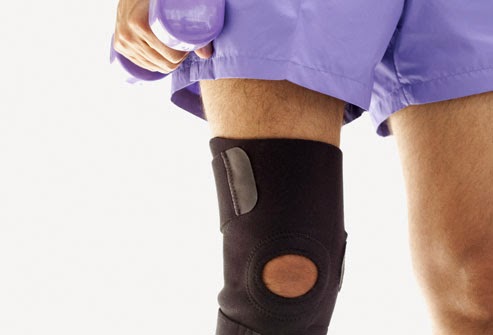 |
| Photo Credit - img.webmd.com |
According a research report from University of Manchester, a knee brace is a more effective remedy to pain control as compared to other medications like joint pills. Various reports have continued to show more and more people are undergoing knee replacements but with little improvements. Others have continued to use pain pills but they still continue to experience the same problem. According to Dr. Michael Callaghan, a researcher in rehabilitation science at UM; the use of a lightweight knee brace will dramatically improve the symptoms and function of the patients who are suffering from osteoarthritis that affects the kneecap. In his study, he used a flexible knee brace made of lightweight Lycra. The Test subjects with arthritic pain were aged between 40 and 70 and they used the device for 12 weeks and it averaged seven hours a day. He divided the groups into two; the first group begun wearing the device immediately and while the other one begun wearing it after some delay.
After a period of six weeks, the people who belonged to the first group reported a very significant improvement as compared to those who were not wearing the device. From here, the non-wearing group also started to wear the device, and after the end of six weeks they also reported a similar result to the first group. According to the patients in this experiment, the knee brace gave them the much needed confidence to move the knee in a normal way. The sentiments were further reinforced by Dr. Callaghan who explained how this device works. According to him, this device helps in improving the muscle strength, knee function and its symptoms.
 |
| Photo Credit - img.webmd.com |
In another separate study, it was evident that Dr. Peterson is not the only one with this reservation. A study in New York City comprised of 49 people with knee OA and they were aged between 45 to 87. All of these people wore a knee brace and as result they experienced less stiffness, pain and disability after six months of use. These participants all reported to hail a normal lifestyle and a majority of them expressed hope to return to their daily chores. Indeed it was reported that these people eventually went back to various chores that included sports.
In conclusion, this research showered that 31% of the participants were found to have taken fewer over the counter anti-inflammatory drugs over the period of six months of using the brace. On the other hand, it was revealed that 35% of participants were found to be taking fewer prescription anti-inflammatory drugs in the same period. The researchers are planning to have a follow up on this development up to a period of two years in order to see whether there is any participant who can end up to have a knee replacement surgery.